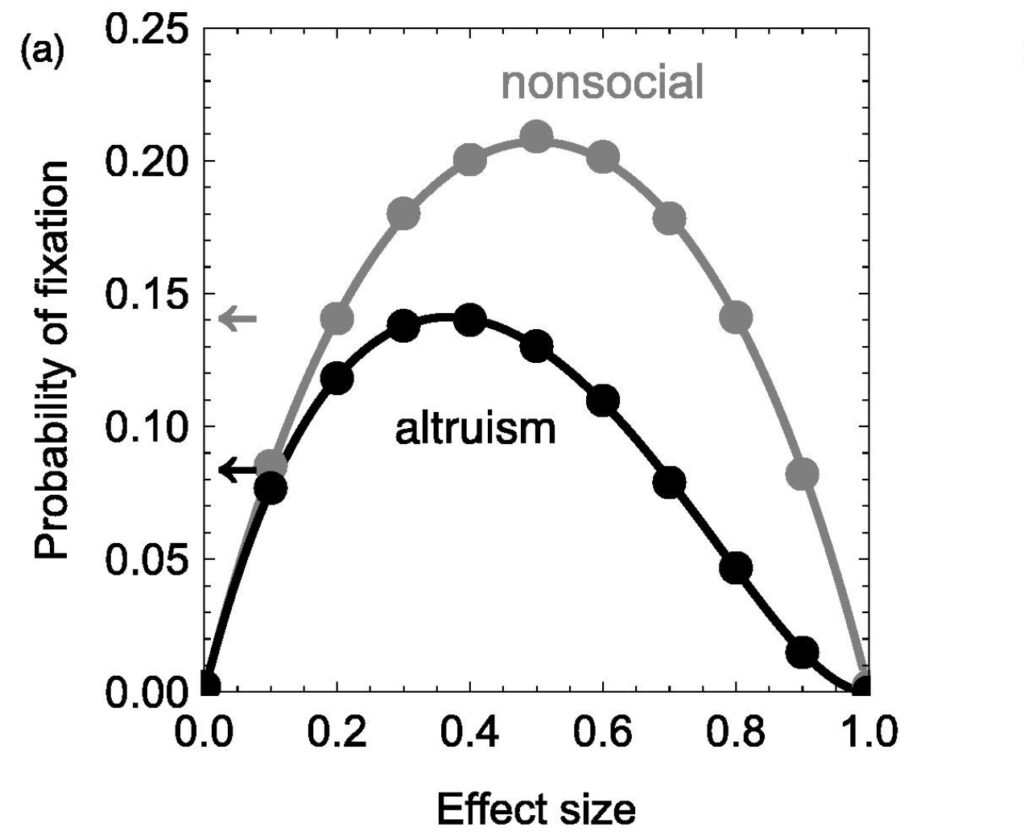Gardner A (in press) A geometric approach to the evolution of altruism. Journal of Theoretical Biology https://doi.org/10.1016/j.jtbi.2023.111653

Fisher’s geometric model provides a powerful tool for making predictions about key properties of Darwinian adaptation. Here, I apply the geometric model to predict differences between the evolution of altruistic versus nonsocial phenotypes. I recover Kimura’s prediction that probability of fixation is greater for mutations of intermediate size, but I find that the effect size that maximises probability of fixation is relatively small in the context of altruism and relatively large in the context of nonsocial phenotypes, and that the overall probability of fixation is lower for altruism and is higher for nonsocial phenotypes. Accordingly, the first selective substitution is expected to be smaller, and to take longer, in the context of the evolution of altruism. These results strengthen the justification for employing streamlined social evolutionary methodologies that assume adaptations are underpinned by many genes of small effect.